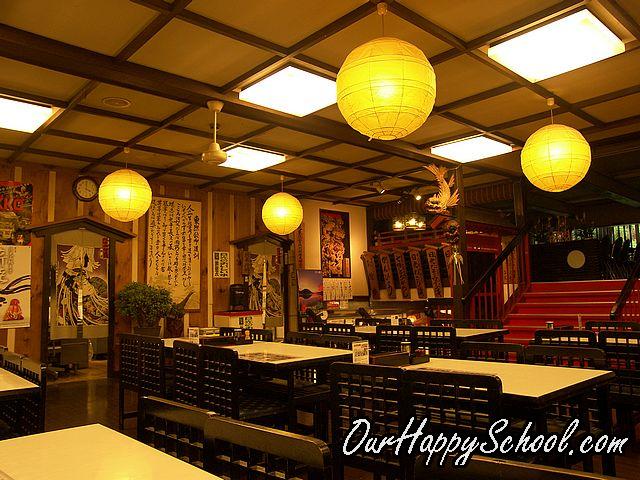Sponsored Links
Using chopsticks, the Japanese way: A blog

I CANNOT RECALL THE EXACT POINT IN TIME when I got so smitten by anything Japanese. Perhaps, my ‘love affair’ with this Asian country started when my brother was granted a scholarship by the Japanese government in the 90’s.
My enthusiasm concerning Japan made me watch various Japan television series and follow Japanese channels in the cable. I even studied Nihongo (Hiragana, Katakana and a bit of Kanji) though I was not able to pursue it. However, the special thing about Japan that struck me the most is its cuisine. Japanese foods have a distinct taste, in addition to being relatively healthy (eating raw dishes such as sushi and sashimi). My love for its cuisine required me to learn to use chopsticks—the small tapered sticks used in pairs of equal length as the traditional eating utensils of Japan and many other Asian countries.
Using chopsticks at first is indeed tough. During my first encounter with Japanese food, I struggled a lot ending up calling the waiters to provide me a set of spoon and fork. Hence, it would be helpful if we are equipped with some knowledge prior to eating out in a Japanese restaurant.
The following are the information I got from Wikipedia which have helped in learning how to use chopsticks:
“…The pair of sticks is maneuvered in one hand, between the thumb and fingers, and used to pick up pieces of food… The correct way to use it is to rest one stick (the lower) on your ring finger with its thicker end in the crook of your hand. Hold the other (upper) stick between your thumb and index finger. If possible, use your right hand—the left is considered impolite, even for left-handers.
“Tap the narrow ends on the plate to even them. Move the upper stick to widen the gap. Grasp a bit of food by closing the upper stick upon it. The lower stick remains stationary. Eat food in small bites; work rice into a mass for lifting.”
As to the Japanese etiquettes that one has to consider in dining in Japanese restaurants or homes, Wikipedia informs us of the following:
- “Food should not be transferred from one's own chopsticks to someone else's chopsticks. Japanese people will always offer their plate to transfer it directly, or pass a person's plate along if the distance is great. Transferring directly with chopsticks is how bones are passed as part of Japanese funeral rites.”
- “The pointed ends of the chopsticks should be placed on a chopstick rest when the chopsticks are not being used. However, when a chopstick rest is not available as it is often the case in restaurants using waribashi (disposable chopsticks), a person may make a chopstick rest by folding the paper case that contained the chopsticks.”
- “Reversing chopsticks to use the opposite clean end is commonly used to move food from a communal plate, although it is not considered to be proper manners. Rather, the group should ask for extra chopsticks to transfer food from a communal plate.”
- “Chopsticks should not be crossed on a table, as this symbolizes death, or vertically stuck in the rice, which is done during a funeral.”
- “It is rude to rub wooden chopsticks together after breaking them apart, as this communicates to the host that the user thinks the chopsticks are cheap.”
- “Chopsticks should be placed right-left direction; the tips should be on the left. Placing diagonal, vertical and crossing each stick are not acceptable both in home and restaurant manners.”
So the next time you eat in a Japanese restaurant (or any other Asian cuisine restaurants), try using chopsticks instead of requesting for a spoon and fork. Observing the proper decorum in using chopsticks would make you all the more enjoy the experience of eating the Japanese way. Shiawase na shokuji! (Happy eating!)
Contributed by:
Nelly Vargas, a homemaker, a mother of two, and a resident of La Paz, Tarlac, Philippines.
How to cite this article:
Nelly Vargas.“Using chopsticks, the Japanese way: A blog” @ www.OurHappySchool.com





Comments
http://www.fauc... (not verified)
Tue, 12/14/2010 - 03:28
Permalink
the best choice
Cyndee Cahilig (not verified)
Mon, 07/29/2013 - 11:45
Permalink
Using chopsticks, the Japanese way: A blog
Cyndee Cahilig (not verified)
Mon, 07/29/2013 - 12:01
Permalink
Using chopsticks, the Japanese way: A blog
Cyndee Cahilig (not verified)
Mon, 07/29/2013 - 12:19
Permalink
Using chopsticks, the Japanese way: A blog
Lenny (not verified)
Mon, 07/29/2013 - 13:08
Permalink
Chopsticks
Mel (not verified)
Mon, 07/29/2013 - 13:17
Permalink
Why we Filipinos Don't use Chopsticks
Gabrielle (not verified)
Mon, 07/29/2013 - 13:36
Permalink
We don't used Chopsticks
Add new comment